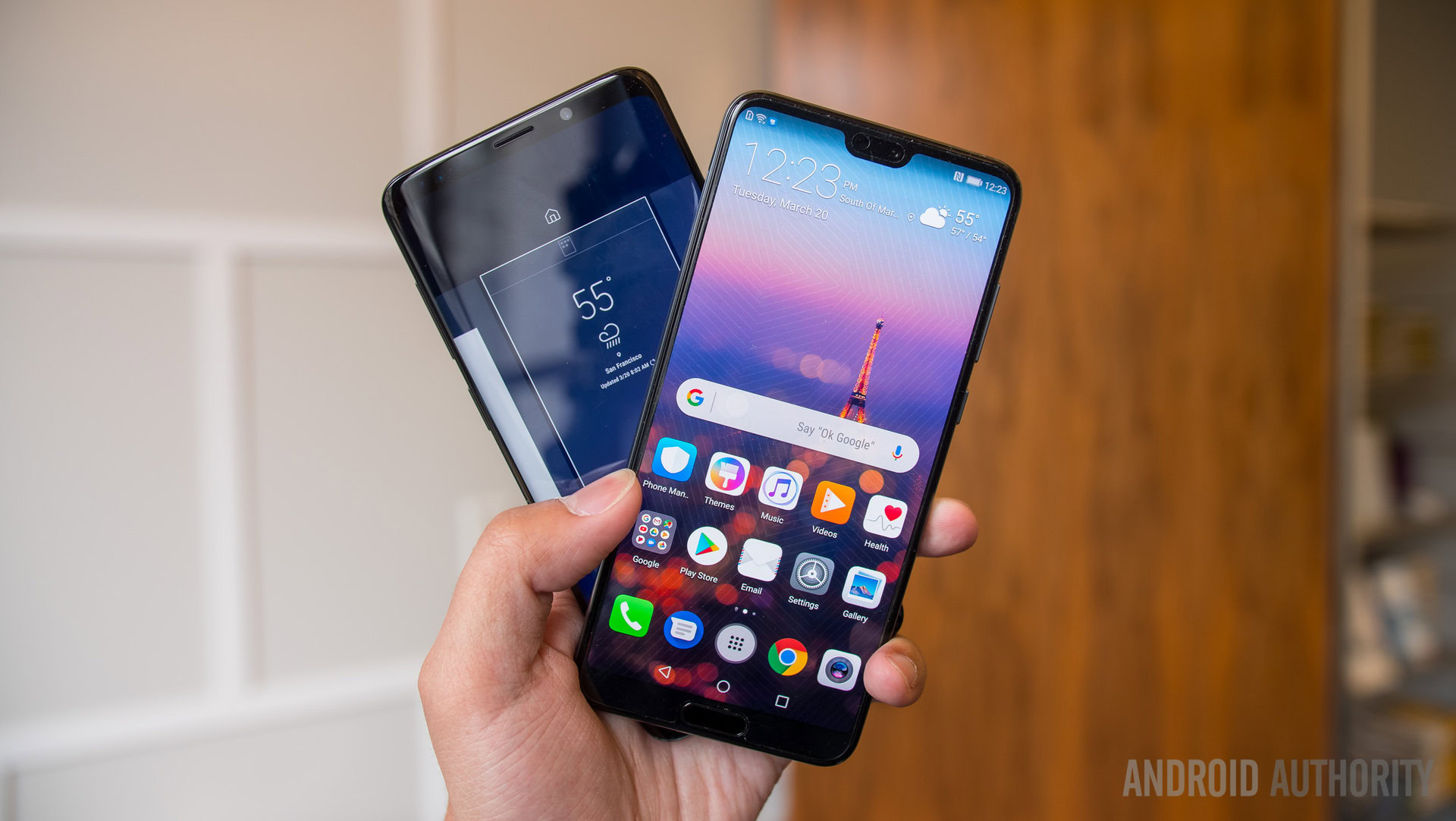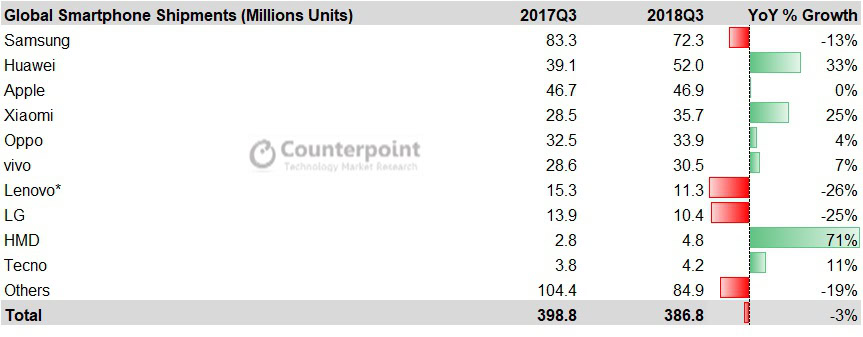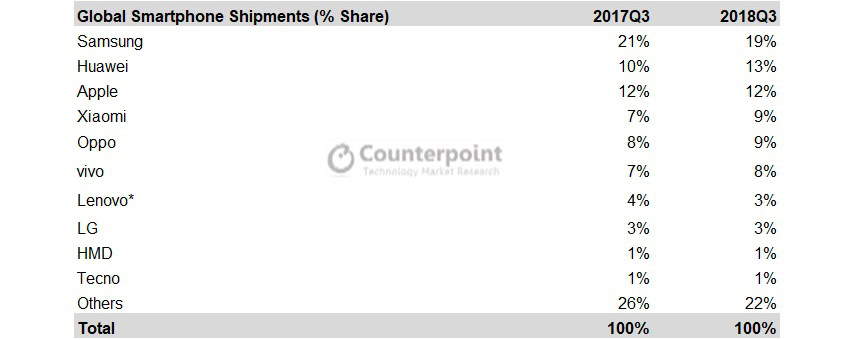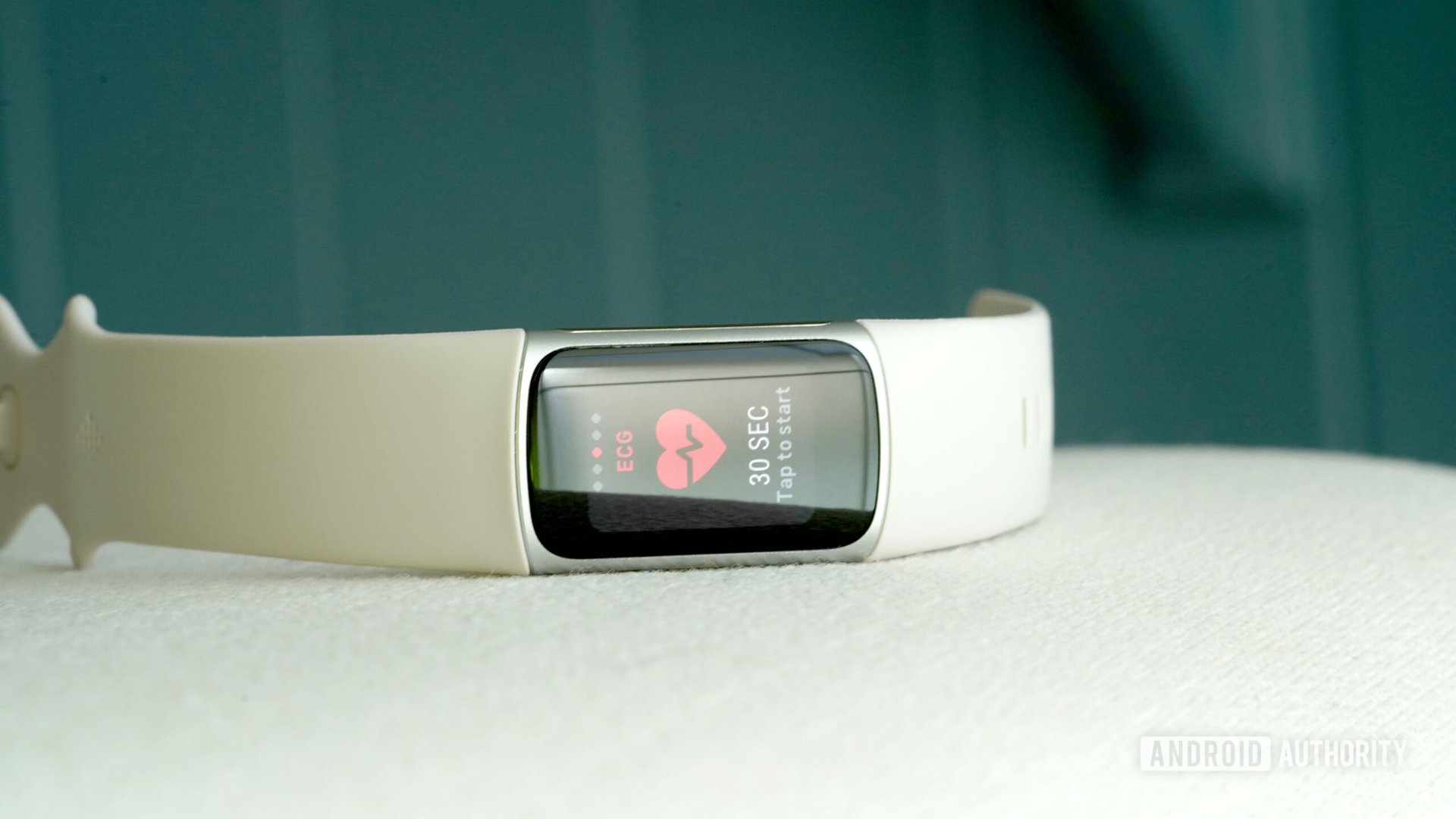Affiliate links on Android Authority may earn us a commission. Learn more.
Q3 2018 smartphone shipments are in: how much longer before HUAWEI claims top spot?
Published onNovember 2, 2018

- The latest smartphone shipment numbers from Counterpoint show big year-on-year gains in market share for HUAWEI and Xiaomi.
- Despite a drop in shipments, Samsung is still number one by a fairly large margin.
- HMD Global, owners of the Nokia brand, had the largest year-on-year percentage increase.
Huawei and Xiaomi were the big winners in Q3 2018, according to smartphone shipment figures from Counterpoint Research. While the numbers say Samsung is still the number one OEM in terms of market share, a 13 percent year-on-year decrease in shipments combined with a 33 percent increase from HUAWEI saw the Chinese company close the gap.

Samsung’s total share of global shipments is now 19 percent, while HUAWEI has 13 percent, according to Counterpoint. The company says Xiaomi, the fourth OEM on the list, saw shipments increase by 25 percent, giving it a nine percent share of total shipments.
Apple is third on the list with 12 percent. While Apple saw only very slight growth year-on-year, Counterpoint says iPhone revenues grew 29 percent due to the iPhone lineup’s average selling price of $793.

The company that saw the biggest year-on-year growth by percentage was HMD — the makers of Nokia phones. It saw sales grow a massive 71 percent when compared to Q3 2017, says Counterpoint. The list suggests HMD is now the ninth biggest smartphone maker globally, continuing an incredible rise that started when HMD released its first Nokia branded Android device in 2017.

Overall, the top ten smartphone OEMs make up 78 percent of total smartphone shipments, according to the figures. This leaves all the other OEMs — Counterpoint says there are 600 of them — fighting for only 22 percent of the market. Brands not in the top ten include those with high-profile phones such as Google, OnePlus, and Razer.
According to Counterpoint, overall global smartphone shipments fell three percent annually — the third quarter in a row that shipments have fallen. There has been much debate about why this may be — including on this site — but the tracking firm puts it down to improvements in smartphone build quality and a lack of meaningful innovation.